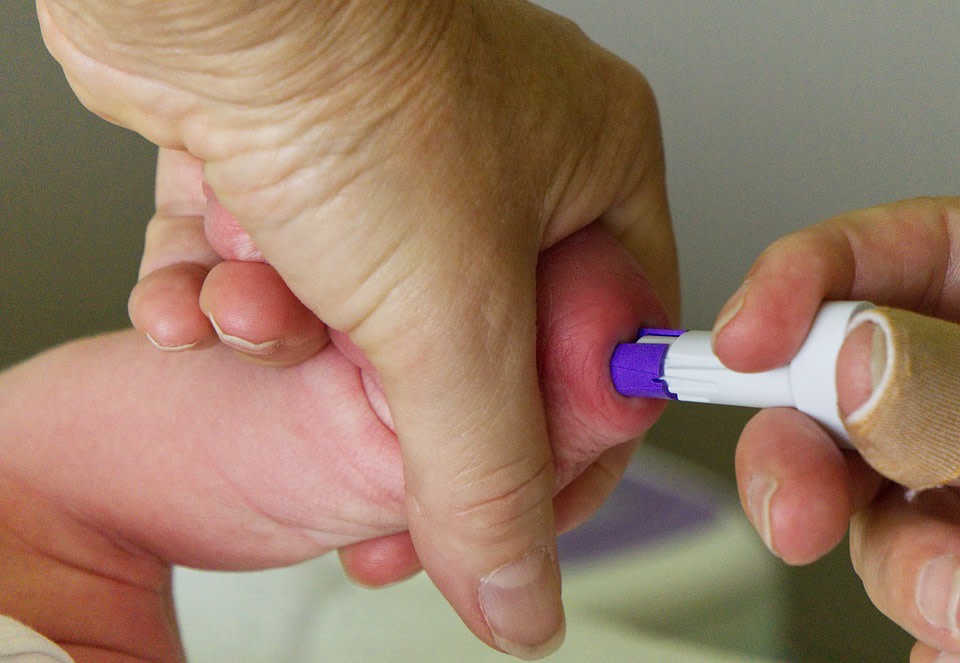Course Review: Global Quality Maternal and Newborn Care
21 Feb, 2022Course Review: Global Quality Maternal and Newborn Care
Introduction
A few months ago I did a coursera course called Global Quality Maternal and Newborn Care which was taught by Yale University. This course taught me a lot but also reaffirmed my own inclination towards the maternity model of care and the importance of this framework to promote the health of birth givers and their babies.
The course explores a number of different factors that contribute to maternal mortality across different countries based on the social demographic index (SDI) and causes for maternal deaths, concepts such as weathering and the impact on blacks in the US during pregnancy and childbirth, the Quality Maternal and Newborn Care Framework introduced in the 2014 Lancet series on Midwifery to support research and practice, and finally exploring policy and advocacy and ways to make change in your own setting.
Maternal Health and Mortality
830 women die every day from pregnancy related causes. Maternal mortality is defined as death that occurs as a direct result of obstetric complications or indirectly as a result of pregnancy-induced exacerbations and pre-existing medical conditions but not as a result of incidental or accidental causes, for example, a motor vehicle accident.
Maternal haemorrhage and hypertensive disorders are responsible for the majority of deaths in low Social Demographic Index (SDI) countries while indirect maternal deaths, other maternal disorders and maternal abortion, miscarriage and ectopic pregnancy are responsible for the deaths in high SDI countries.
USA has had an increase in maternal mortality since 2003. Based on trends in maternal mortality reported in the US From CDC (2017), US rate has steadily increased while UK, France, etc has decreased. Black women and birthing people die at 3 – 4 times the rate of white women regardless of education and socioeconomic status.
The impact of weathering (Gernomius et al) is the impact of dealing with disadvantage through the life course wears down the body’s organs and tissues, particularly the cardiovascular system causing advanced health deterioration and early death. It has changed the cellular make up of blacks in the US making them at higher risk for chronic diseases like diabetes, hypertension, and making them more at risk for chronic manifestations of these diseases during times like pregnancy and birthing.
Prior to 1750 all births were performed by midwives. Then after the war obstetricians and public health nurses joined forces to move birth from home to hospital, there were disparaging articles published about midwives. What was failed to be published was that traditional midwives had lower rates of maternal mortality and neonatal morbidity (Sullivan and Weitz, 1988).
In 1900, 50% of births were attended by midwives, in 1935, 12% of births were attended by midwives, in 1972, 1% of births were attended by midwives. Currently 12% of all vaginal births are attended by midwives. There are 14000 midwives in the United States. But only 6% are midwives of colour.
Still births
Pakistan has the highest rate at 43 still births per 1000 births and Norway lowest with 2 in every 1000 births. (A still birth is fetal deaths at 28 weeks or greater gestation.)
US Still birth rate has declined dramatically in the last 7 decades. The reasons for the decline in stillbirths:
Monitoring foetuses during labour and c-section for those foetuses at risk of stillbirth.
Monitoring at risk foetuses prenatal (FGR), and early delivery for those at risk of stillbirth
Better care for women with preeclampsia and eclampsia
Prevention and treatment of perinatal infections (syphilis)
Rhogam to prevent Rh disease
Better care for women with diabetes
Reduction in post term pregnancies
Frequent still births can lead to depression, empathy burn-out, or a numbing of emotions and inability to relate to persons who experience loss. We need to consider the psychological impact of stillbirth on those involved in the birth, categorisation and data collection considerations and the five recommendations to reduce stillbirth from the Lancet stillbirth series. By caring for mothers we improve the chances that babies survive and thrive.
Why is breastfeeding important?
Early Breastfeeding initiation can drastically improve infant mortality.
For children, breastfeeding reduces risk of:
Gastro-intestinal infections
Ear infections
Upper respiratory infections
Onset of obesity
And improves intellectual development
Amongst mothers it reduces the risk of:
Severe postpartum haemorrhaging
Breast and ovarian cancer
Hypertension
Type 2 Diabetes
The world health organisation and UNICEF recommend that all newborns be put to the breast within one hour of birth.
There was a recent study on “delayed breastfeeding initiation and infant survival: A systemic review and meta-analysis.” Smith et al. (2017). This study looked at over 135000 infants. It found that for infants where breastfeeding was initiated between 2 – 23 hours after birth, they had a 33% greater risk of neonatal mortality. Infants who initiated breastfeeding after 24 hours after birth compared to those who had breastfeeding initiated within the first hour, had a 2.19 fold greater risk of neonatal mortality.
Another study conducted by research team at Yale school of public health “Breastfeeding during the first hour of life and neonatal mortality” Boccolini et al. (2013), In this study analysed the demographics and health surveys from 67 low and middle income countries. They found that countries that fell in the lowest early breastfeeding initiation tertiles had 24% higher neonatal mortality rates.
Early breastfeeding initiation lead to reduced neonatal mortality because colostrum which is the first milk is very rich in vitamin A and is loaded in antibodies and bioactive substances. Colostrum is the first form of vaccination designed by mother nature. Facilitating breastfeeding within 1 hour after birth needs to be a part of global care immediately
High quality systems follow these recommendations:
Breastfeeding within hour
Early skin to skin contact
Immediate suction, drying, and stimulation
Delayed clamping of the umbilical cord
Vitamin K prophylaxis
The Quality Maternal and Newborn Care Framework
This Framework was first introduced in the 2014 Lancet Series on Midwifery and it delineates five components of quality care to which all childbearing people deserve access.
Care delivery and the spectrum of services that entails; Education Information Health Promotion; Assessment, Screening, Care Planning, Promotion of Normal processes, Prevention of complications. And for childbearing women and infants with complications also first line management of complications and medical obstetric neonatal services.
Available, accessible, good-quality services – adequate resources, competent workforce. Continuity, services integrated across community and facilities.
Respect, communication, community knowledge and understanding. Care tailored to women’s circumstances and needs.
Optimising biological, psychological, social and cultural processes; strengthening woman’s capabilities. Expectant management, using interventions only when indicated.
Practitioners who combine clinical knowledge and skills with interpersonal and cultural competence. Division of roles and responsibilities based on need, competencies, and resources.
Some key points to note here are that universal scaling up of midwifery (with family planning) would reduce maternal mortality by 82% with similar reductions on stillbirths and neonatal deaths. In order to implement the framework we have to go from medicalised care and high risk care to preventative and supportive care with quality care for all mothers and all babies. Those countries that have lowered their mortality rates over the past 20 years are more likely to have increased and accessible midwifery services. The evidence supports that 50+ maternal and newborn outcomes are improved by midwifery. The midwifery model of care is intended to be “relevant to any setting, and to all who need, or provide, maternal and newborn care and services. Interdisciplinary team work and collaboration are inherent in the implementation of the framework.”
The majority of this course steps through the QMNC Framework and provides links to research and helpful videos for practitioners on how to deliver care to mothers and new borns in line with the framework. Some of the videos are not for the faint hearted but I would still encourage anyone who is not a health professional but interested in childbirth or having a child to watch them anyway as they are extremely educational.
Conclusion
There are many studies that support the midwifery model of care but I will provide a summary of the Cochrane Review here as captured in Module 2 of the course:
The Cochrane Review conducted in 2017 studied the outcomes from the midwifery model of care and found that midwifery care resulted in a host of positive outcomes. Women who received midwife led continuity of care were less likely to have an epidural, have episiotomies, have an instrumental birth, experience preterm birth or experience the death of their infant. They were also more likely to have a spontaneous vaginal birth.
The review concluded that “the review identified no adverse effects compared with other models. Women who received midwife-led continuity models of care were less likely to experience intervention and more likely to be satisfied with their care with at least comparable adverse outcomes for women or their infants than women who received other models of care.”
The data speaks for itself. If you look at a map of the United States on https://www.birthplacelab.org/maps/ which helpfully captures data on integration of midwifery care in each state and provides data on intervention rates in that state for C-sections, induction, low birth weight, premature birth, vbac, breastfeeding at birth etc, you will find that states that have a higher integration of midwives have better outcomes.
It is as simple as this – Midwives save lives. The are a valued and integral part of our healthcare systems and better integration of midwives will empower and protect mothers and their babies.
Get The Best Of Sleepy Roo Delivered To Your Inbox
Subscribe to my newsletter and get the latest info on baby sleep! You can unsubscribe at any time.



